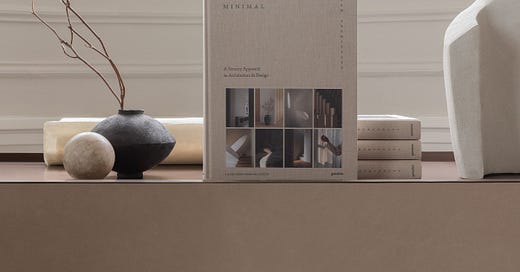I’ve been reading a lot about architecture and interior design lately.
Rae and I bought our house back in November, so it was a bit of a mad rush unpacking boxes and trying to make the place habitable in the run up to Christmas. Now that phase is over and we’ve lived in it for a couple of months, we’re starting to adapt the place more to our taste. It’ll be a slow, ongoing process, one we’re trying hard not to rush.
I’ve read perhaps five or six house design books so far, which I’ve thoroughly enjoyed, but it was only when I got to this last one that I realised what had been missing from the first batch.
They had simply glossed over four of the five senses.
I’m sure you can guess which sense the other books did focus on.
We are so heavily reliant on our sight that it would be unthinkable to write a book about design that doesn’t talk about the way things look.
If you asked the average person on the street what design actually means, you’d probably get an answer along the lines of ‘making things look nice’. But we don’t live in just the visual realm, we have touch, smell, taste and hearing too.
Now, forgive me, I know this is incredibly obvious to point out. And yet, we all too often find ourselves in spaces that might not look half bad in a photograph, yet still feel cold, noisy, distracting and uninspiring to actually exist in.
We may even have designed a few spaces like this in our own homes…
Aside from the sensory overload that comes from our propensity of owning too much stuff, the second trap most of us seem to fall into is believing the lie of dishonest materials.
Wallpaper that pretends to be brick. Particle board that pretends to be solid wood. We even have plastic with artificial wood grain on it now.
Seen in the right light, from the right angle, on the day it’s taken out of the packet, we might just about convince ourselves that it looks as good as the real thing.
But the illusion never lasts. Even before wear and tear sets in and destroys the facade, it only takes a single other sensory interaction with these materials to see past the trick. Plastic or particle board will never feel the same as the real thing because its temperature will be off. It also won’t age in the same way. Nor will it smell like real wood, or have the same acoustic properties. I’m not in the habit of tasting wood, but I imagine it’ll taste rather different to any faux wood, should you be inclined to find out.
Our eyes are a great guide, and their importance shouldn’t be understated.
We can quickly survey a scene and discover both danger and a rare opportunity, in a way we would struggle to with our other senses. We’re built to react quickly to this input, because in some situations it can mean the difference between life and death. If we’re in this state of mind when we shop, thinking in terms of ‘win or lose’, it’s no wonder we forget that we have four other senses at our disposal.
We won’t pick items up and see how they feel in our hands, or hear how they sound when they’re tapped. We’re so conditioned from childhood to ‘look and not touch’ that we could spend all day shopping and our hands may never stray from our pockets. And that’s if we even make it into a physical store at all.
Online marketers are the masters of playing with our emotions.
They bait us with limited time offers and huge markdowns that put us almost into a state of panic: 80% off, just 1 left in stock, free delivery this weekend only!
Quick, buy now!
… wait, what did I actually just buy?
We’ve all been there.
We know the best writers, just like the best designers, are able to create memorable experiences by engaging a multitude of senses.
Perhaps we should add shoppers to this list too.





Enjoyed this one Ben, I really appreciate your thoughtfulness and observation. Congratulations on your house purchase too! Wishing you both many happy years there!